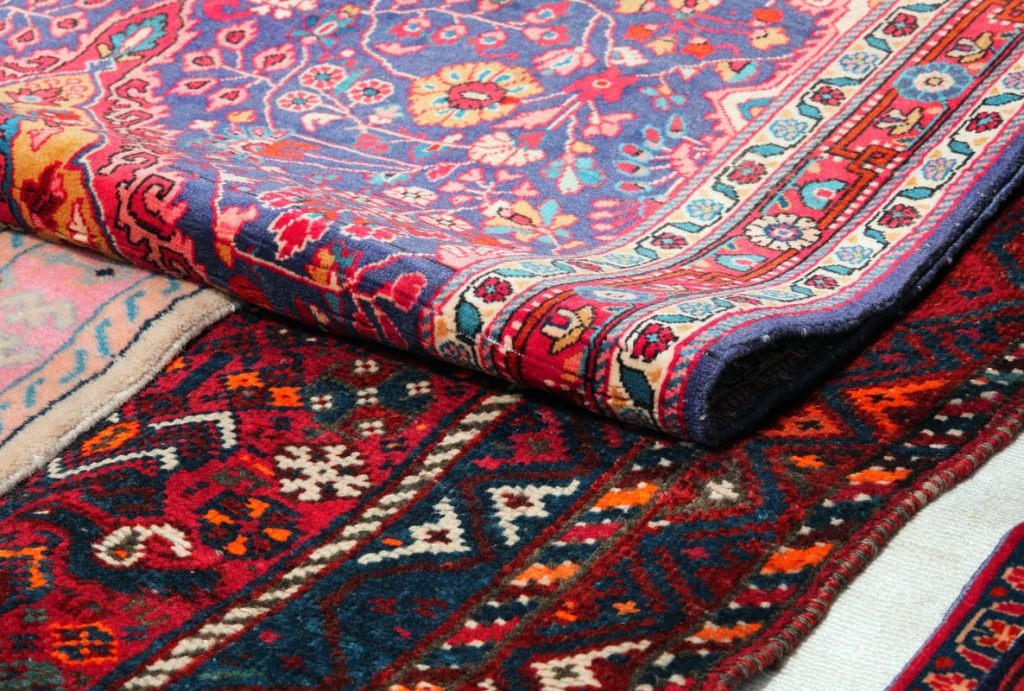Blogs
The History and Cultural Significance of Oriental Rugs
You’re about to embark on a fascinating journey through the world of Oriental rugs, where intricate designs and exquisite craftsmanship intertwine with rich cultural heritage. From the ancient Pazyryk Carpet to the masterpieces of the Safavid dynasty, these rugs have captivated art enthusiasts and collectors for centuries. As you explore the regional variations and the impact of Islamic art on rug design, you’ll uncover the stories woven into every knot and pattern.
Origins and Ancient Techniques of Oriental Rug Weaving
Though the earliest surviving Oriental rug fragments span a wide geographic area and time period, they reveal the ancient origins and techniques of this intricate art form. You’ll find the oldest known pile-woven rug, the Pazyryk Carpet, dating back to the 5th century BC, showcasing finely crafted symmetric knots and elaborate designs. Flat-woven kilims and rug fragments with various knotting techniques have been discovered in China, Syria, Iraq, and Afghanistan, demonstrating the widespread tradition of carpet weaving in the ancient world. These precious remnants offer a glimpse into the rich history and cultural significance of Oriental rugs, which have been cherished as functional and decorative art for centuries, with Persian carpets being among the most renowned and sought-after.
The Influence of Islamic Art on Oriental Rug Design
The vibrant world of Oriental rugs owes much of its captivating beauty and symbolism to the profound influence of Islamic art. As Islam spread across the Middle East and Central Asia, its distinctive aesthetic shaped the evolution of rug design. You’ll find intricate geometric patterns, arabesque motifs, and calligraphic inscriptions woven into the fabric of these treasured textiles, reflecting the spiritual and artistic traditions of the Islamic world. The Safavid dynasty’s patronage during the 16th-17th centuries ushered in a golden age of Persian rug weaving, with elaborate floral and curvilinear designs reaching new heights of sophistication. Traveling along the Silk Road, these masterpieces of Islamic art inspired weavers far and wide, leaving an indelible mark on the rich tapestry of Oriental rug heritage.
The Golden Age of Persian Carpets: The Safavid Dynasty
Stepping into the resplendent world of Persian carpets during the Safavid Dynasty (1501-1732), you’ll find yourself immersed in an era that marked the zenith of rug-making artistry. The establishment of royal workshops attracted the finest artisans, resulting in Safavid carpet designs characterized by intricate floral patterns and exquisite craftsmanship. You’ll be awestruck by iconic masterpieces like the Ardabil Carpet and the Sheikh Safi Carpet, epitomizing the pinnacle of Safavid rug-making techniques. Under the patronage of visionary rulers like Shah Ismail I and Shah Abbas I, the Safavid rug-making industry flourished, gaining worldwide recognition. The influence of Safavid designs, such as the arabesque motif, extended beyond Persia, leaving an indelible mark on the development of Turkish rug traditions.
Regional Variations in Oriental Rug Weaving Traditions
Embark on a captivating journey through the diverse tapestry of oriental rug weaving traditions, where each region’s unique style tells a story of its people, history, and culture. From the intricate designs of Persian rugs to the bold patterns of Anatolian carpets and the delicate silk threads of Chinese rugs, you’ll discover a world of artistic identity expressed through traditional motifs and weaving techniques. The materials used, such as wool, cotton, and silk, vary by region, influencing the rugs’ texture and durability. As you explore these regional variations, you’ll gain a deeper appreciation for the cultural heritage woven into every knot and the meticulous craftsmanship that has been passed down through generations, making each oriental rug a unique masterpiece.
The Impact of Oriental Rugs on Western Art and Culture
As Oriental rugs captivated the hearts and minds of Western Europeans in the 17th century, they began to weave their way into the very fabric of Western art and culture. These intricately designed woven rugs, initially used as wall hangings or table coverings, soon became cherished floor coverings in the 18th century. The craftsmanship and beauty of Oriental carpets inspired artists, furniture makers, and interior decorators, who eagerly incorporated these traditional designs into their creations. The display of rare and valuable rugs in European households became a symbol of wealth and cultural sophistication. This cultural exchange between East and West marked a significant cross-pollination of artistic traditions, forever influencing the decorative arts and interior design in the Western world.
Frequently Asked Questions
What Is the History of Oriental Rugs?
You’ll find a rich tapestry of weaving techniques, dye materials, and design motifs in oriental rugs, reflecting regional variations, nomadic traditions, and Silk Road trade. From wool production to knotting patterns, they’re decorative masterpieces steeped in symbolism.
What Is the Cultural Significance of Persian Rugs?
You’ll find Persian rugs are steeped in ancient traditions and symbolic meanings. Their intricate designs and weaving techniques reflect regional variations, religious influences, and family heritage. As luxury goods, they’ve long been traded along historic routes.
What Is One Important Use of the Oriental Rugs in the Islamic Culture?
In Islamic culture, you’d find oriental rugs used as prayer mats. They’re designed with intricate patterns to facilitate spiritual reflection and connection during religious ceremonies, serving as an important expression of faith.
What Is the Meaning of Oriental Rug?
You’ll find that Oriental rugs are woven craftsmanship at its finest, featuring intricate patterns and symbolic motifs. Regional variations in material composition, production techniques, and decorative aesthetics have made them highly sought-after collector’s items in the export economy.

